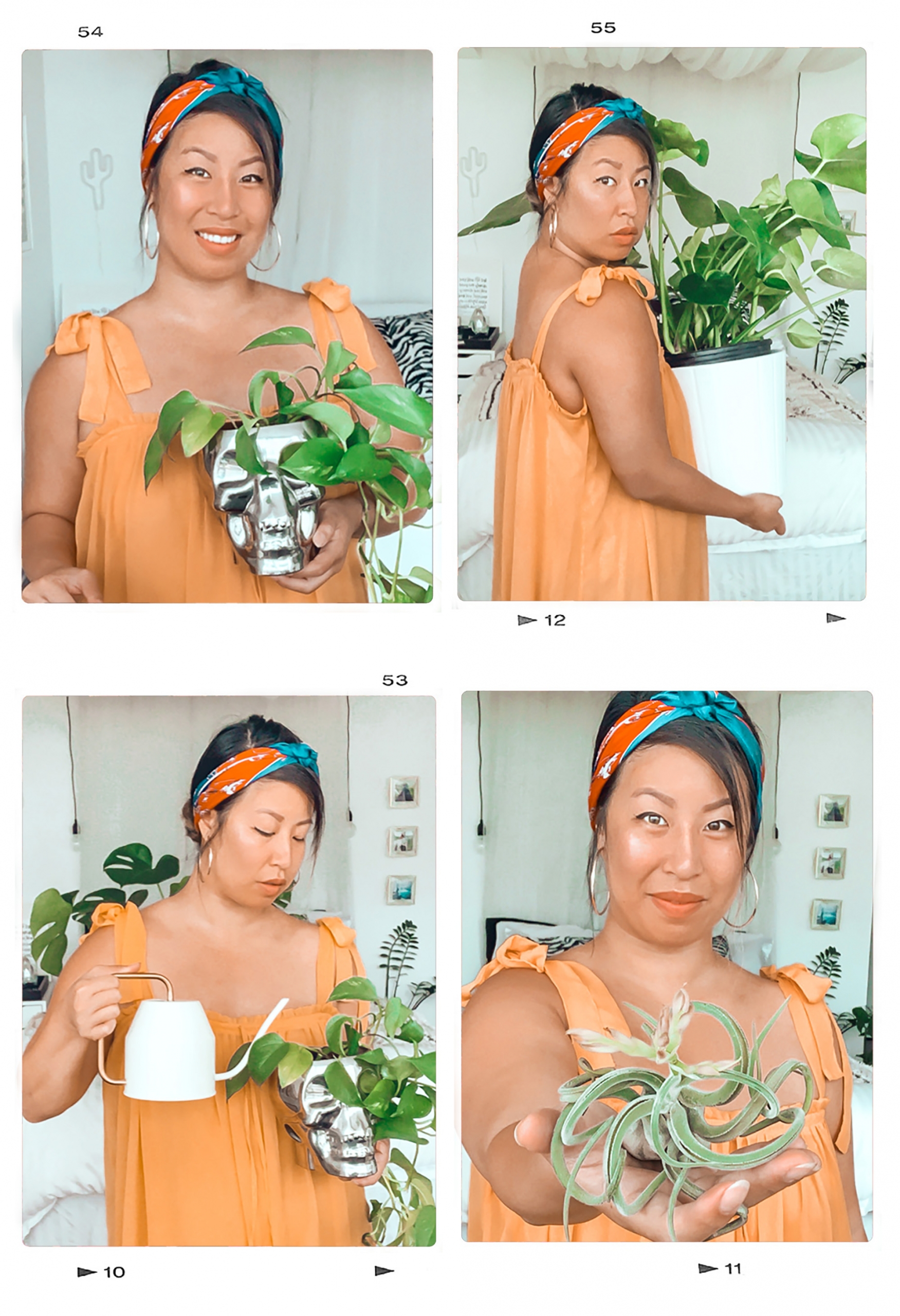
There’s nothing more depressing than spending an obscene amount of money on indoor plants in the hopes of creating a foliage-filled haven, only to watch your money slowly wither away before your eyes like cursed mer-people trapped in a sea witch’s cave.
Well, maybe it’s not the most depressing thing but it’s certainly up there, especially if you consider your plants to be your babies (in lieu of actual babies or small dogs that you stuff into knit sweaters). The key is picking low maintenance plants that will flourish in any home environment.
Indoor plants have been on the rise in popularity for quite a while, particularly among millennials, but the lockdown has kicked it into high gear. Not only does being home 24/7 mean we can be more attentive to our leafy charges (sometimes to their detriment) but they create a calming oasis for you to thrive in while stuck indoors.
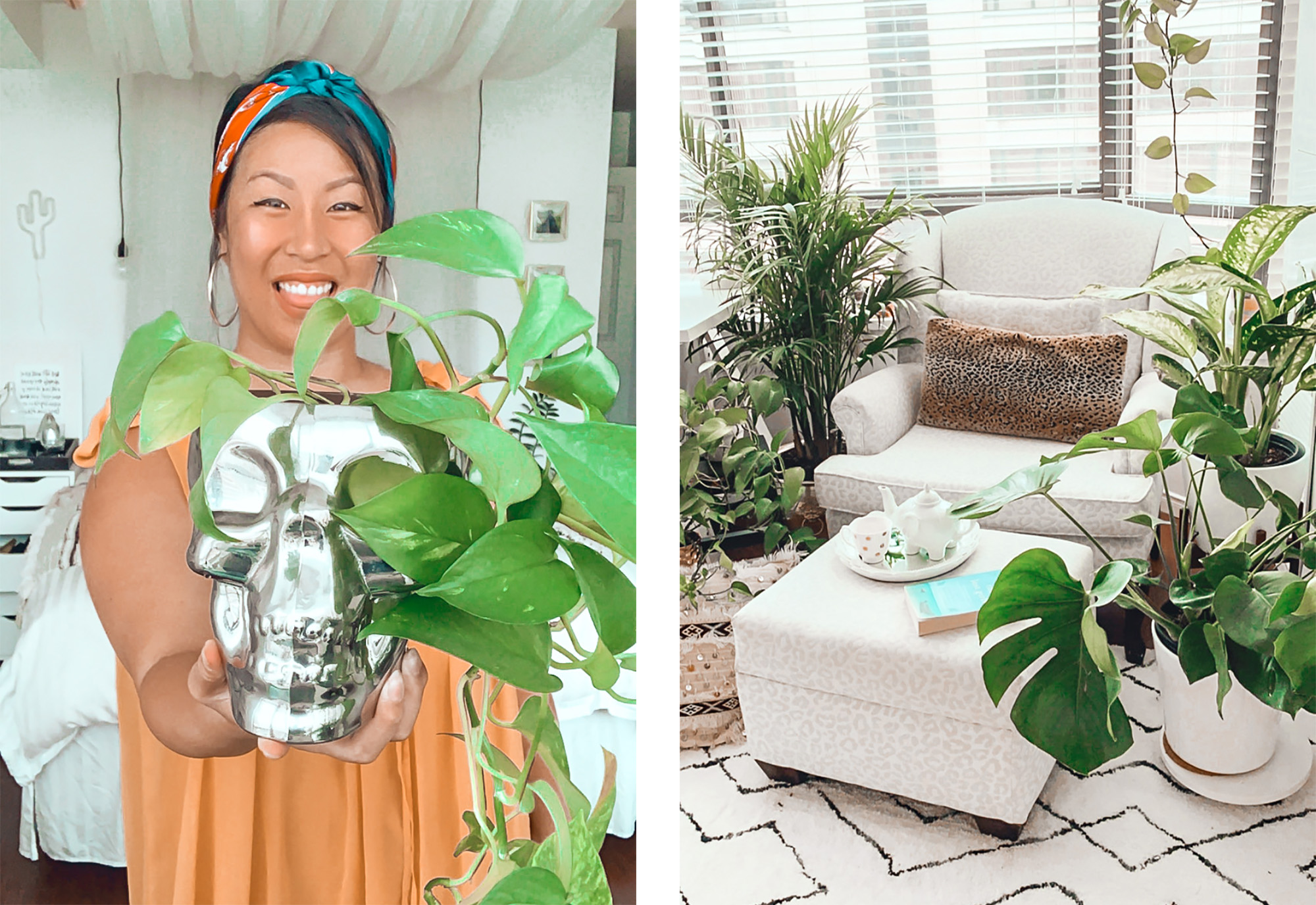
Planted some Pothos in a skull candy holder. I call him Harry Headbanger b/c of his wild locks / Relaxing reading nook
Benefits of Having Indoor Plants
Enjoy all the benefits of taking a stroll in the forest by bringing the nature into your home.
Studies have proven that indoor plants can boost mood, productivity, creativity and mental clarity. It can also increase self-esteem and relaxation while simultaneously reducing stress.
There’s even been a study that shows merely touching a plant will evoke an unconscious calming effect. I don’t know about you but I could definitely use some more calm in my life 💆🏻♀️
In times of uncertainty (like the pandemic), it’s comforting to exercise some level of control while nurturing our plants and witness the predictable rhythm of nature — you plant a seed, water it, it grows.
Plus, as we’re working from home more, indoor plants will help clean the air by absorbing toxins, increasing humidity and producing oxygen which impacts our mental health and improves work performance.
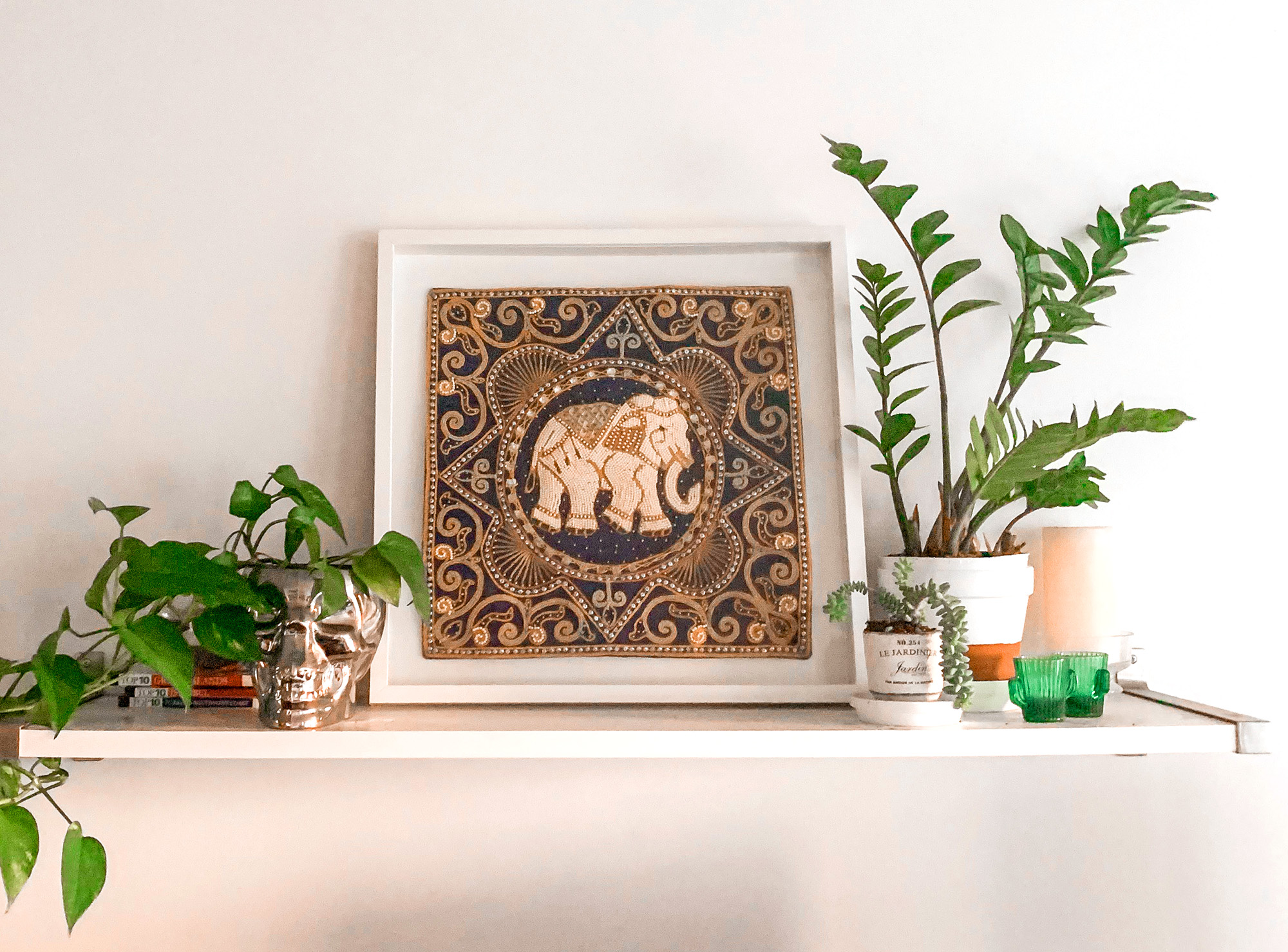
RELATED READING:
➳ How To Transform Your Bedroom Into A Personal Oasis
➳ 8 Idyllic Spots To Go Glamping Near Toronto This Summer
➳ Marrakech for Plant Lovers
If you’re a beginner with a black thumb, have no fear! Here are 6 indoor plants that are easy to care for and will flourish indoors so you can start the home jungle of your dreams, as well as general tips and tricks for plant care:
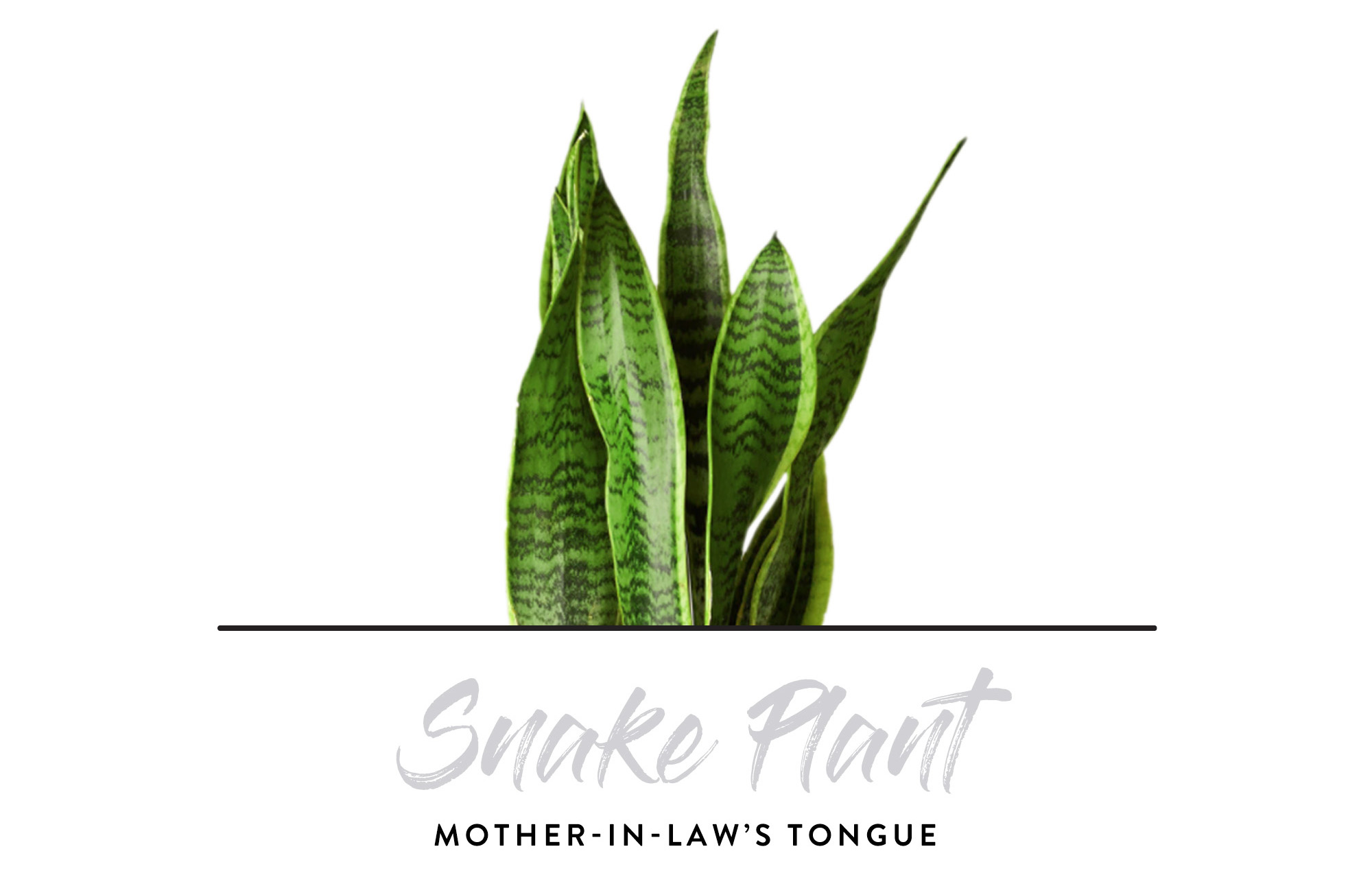
Of all the indoor plants that I’m likely to suggest to a trepidatious new plant parent, the Sansevieria trifasciata (also known as Snake Plant or Mother-In-Law’s Tongue) would be the first. It’s an extremely hard-to-kill hardy plant that can grow from 6 inches all the way to 8 feet high (!!) with stiff, sword-like leaves and a mottled green pattern that resembles snake skin.
Sansevieria were first cultivated in China, believed to bestow the virtues of the eight gods — long life, prosperity, intelligence, beauty, art, poetry, health and strength — upon its owners. It has also has demonstrated air purification abilities by removing formaldehyde and benzene from the air.
Light Conditions: Indirect but steady light. Can adapt to full light (it’ll grow faster) and survive in dim light but direct light will burn the leaves.
Watering: When the soil is dry (10 days to 2 weeks, monthly in the winter). If you’re not sure, it’s always better to err on the side of under watering.
One time, I had a guy over and he correctly identified my Pothos Plant. I was never more attracted to him than I was in that moment…..and then that feeling quickly passed while my love for my pothos persevered.
Also known as the Devil’s Ivy (which sounds like cool slang for cannabis), as far as indoor plants go, it’s easy to keep alive as it can thrive in a wide range of environments. Another air purifying plant, I like to place my pothos in hanging planters or high shelves so the sneaking tendrils can dangle from above. The cuttings — once rooted — can even thrive in water as well as soil.
Light Conditions: Bright, indirect light. Can also tolerate medium to low light but not grow as fast.
Watering: Once a week, depending on whether the top 2 inches of soil is dry or not. Again, it’s better to hold off if you’re not sure. You’ll be able to tell it needs water when the leaves start to wilt.
With long, reaching stems abundant with shiny, deep green oval-shaped leaves, you’ll easily fall for the Zamioculcas zamiifolia (its unpronounceable botanical moniker), native to Eastern Africa.
Zanzibar Gems (also known as a ZZ Plant) are as low maintenance as the name is exotic, making them ideal indoor plants. They don’t need much beyond adequate light and an occasional watering to prosper. There’s no need to angst if you forget to water them from time to time as they grow from rhizomes — modified stems running horizontally underground that store water and nutrients.
Light Conditions: Bright, indirect light. Can technically survive without natural light but will become leggy when it doesn’t get enough while direct light will burn its leaves.
Watering: Once every week or two, depending on their growing conditions. As a drought-tolerant plant, Zanzibar Gems can go months without watering if need be, but in general they should be watered once the soil is completely dry.
Ahhhh, the newest addition to my plant harem — the Monstera deliciosa. Also deliciously known as the Swiss cheese Plant because its large, heart-shaped leaves develop holes as they mature.
Why do they have holes? Some say the “leaf fenestration” evolved in the plant to resist strong winds in hurricanes in its native Central America while others believe it’s to allow water to reach the roots. Either way, it looks pretty cool and gives the robust Monstera a distinctive appearance. Plus, these super trendy plants flourish in standard temperatures and filtered indirect light, top requirements when looking for indoor plants.
Light Conditions: Medium to bright, indirect light. Direct light will burn leaves. Rotate plant periodically to ensure the growth is even on all sides as the sun isn’t coming from directly above.
Watering: When the top 2 to 4 inches of soil is dry. They like to be consistently and evenly moist, not overwatered.
What’s cooler than a plant that isn’t limited to the confines of being rooted in soil??? Air Plants are hardcore independent like that, pulling moisture from the air (hence its name), the term referring to roughly over 500 different species.
Native to warm climates, these flowering perennial plants are in the Tillandsia group of the Bromeliad family and normally grown as indoor plants. They’re great to put in glass cases, shallow bowls, suspended in the air or even mounted to driftwood.
Light Conditions: Bright, indirect light.
Watering: 1-2 times a week, mist the bottom. Every 2-3 weeks soak in room temperature water for 5-10 minutes and allow to fully dry. The brighter the spot it’s in, the more water it’ll need.
If you’re looking for indoor plants to lend your space a jungle vibe, the Areca Palm, also known as a Butterfly or Bamboo Palm or Dypsis lutescens is a lush choice. With an abundance of soft, arching fronds, this palm will clear the air of toxins while transporting you to that tropical destination that your wandering heart is yearning for.
It’s great to fill up a large, empty area of your home with it’s feathery greenery with up to 100 leaflets that will definitely make a bold statement.
Light Conditions: Bright, indirect light. Direct light will burn its leaves.
Watering: They like to be slightly moist at all times but allow to dry out a bit between waterings. As a palm, it won’t tolerate overwatering. Use a fertilizer spray every month or so for maximum health.
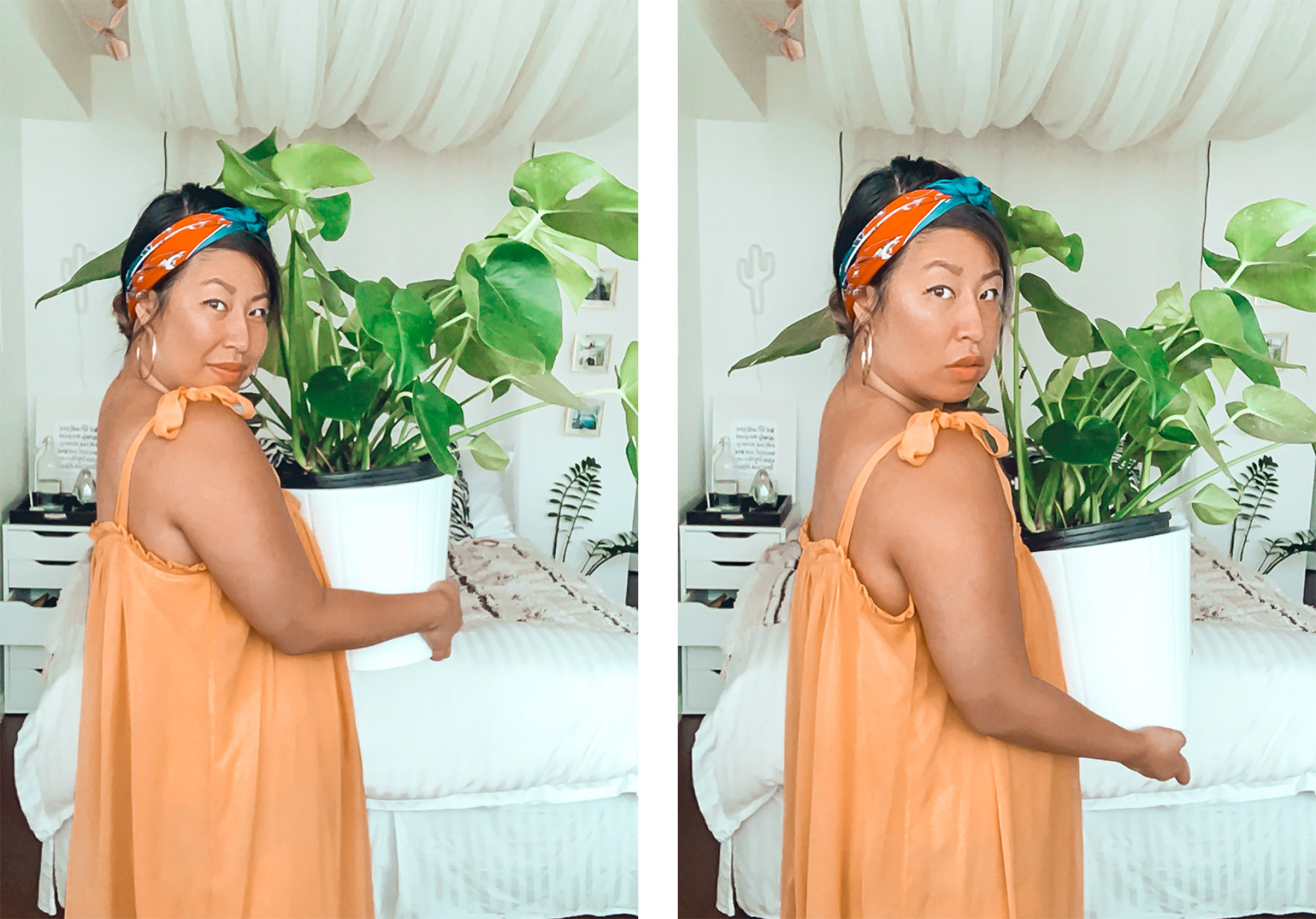
Just cuddling my new Monstera baby….helps them grow!
Watering Considerations for Indoor Plants
It’s hard to say for sure how much or how often you should water any particular plant because it depends on a couple of factors:
+Temperature: Is it hot and humid or air-conditioned? AC dries plants out faster
+Type of Pot: Plants dry out quicker in smaller pots as well as ones made of terracotta
+Light: Less light means slower growth thus the plant uses less water
+Roots: If the plant is very pot-bound with plenty of roots, it’ll need more water
At the end of the day, a good rule of thumb is that it’s better to under water than overwater your plant and causing root rot. Check that the soil is at least 2 inches dry on the surface before watering.
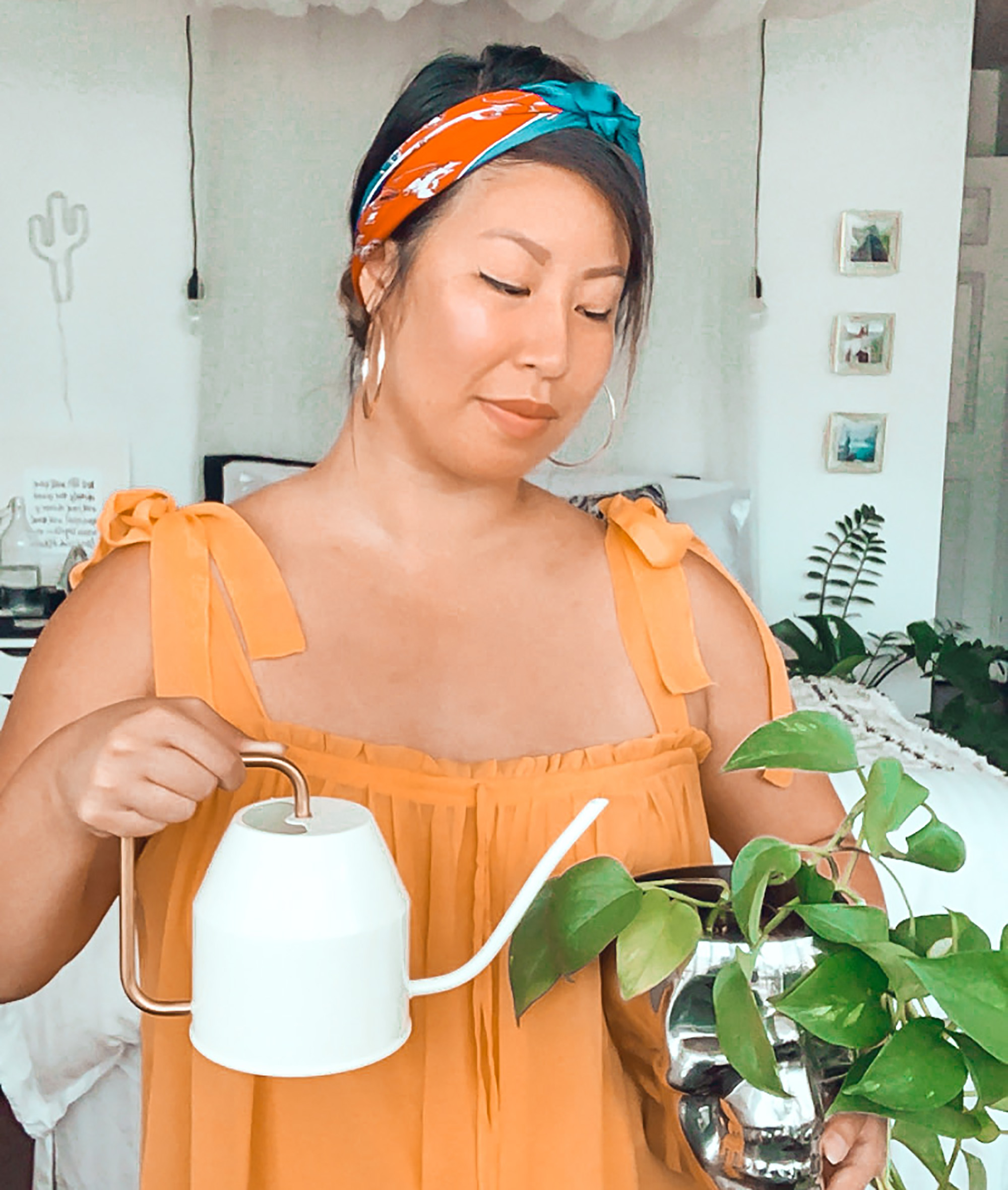
General Tips for Care of Indoor Plants
✧ If yellowing on one side, it’s because the water isn’t being dispersed evenly
✧ Leave plant in the container it comes in when possible. It’s easier to transfer when needed
✧ Wipe the leaves when it gets dusty or it prevents photosynthesis
✧ Use sharp shears or scissors to cut off dead parts
✧ Pruning plant of longer, hanging parts will make it fuller
✧ Make sure it’s not in a draft…plant will get cold and dry out
✧ Rotate plants with longer stems to avoid it growing unevenly
✧ Use a spray fertilizer every month or so to ensure ideal health of plant babies
I never really got in to plants until my maternal grandmother — the OG plant lady — passed away. I like to think that her love of greenery transferred into me….at the very least that’s how I rationalize turning my space into a verdant jungle. I’m glad I did thought because plants have really transformed my home into a zen oasis.
Now that you’ve added plants to your indoor decor game, check out how you can transform your bedroom into a calm oasis.
Keep your stalking game strong and follow me @teriaki if you aren’t already!

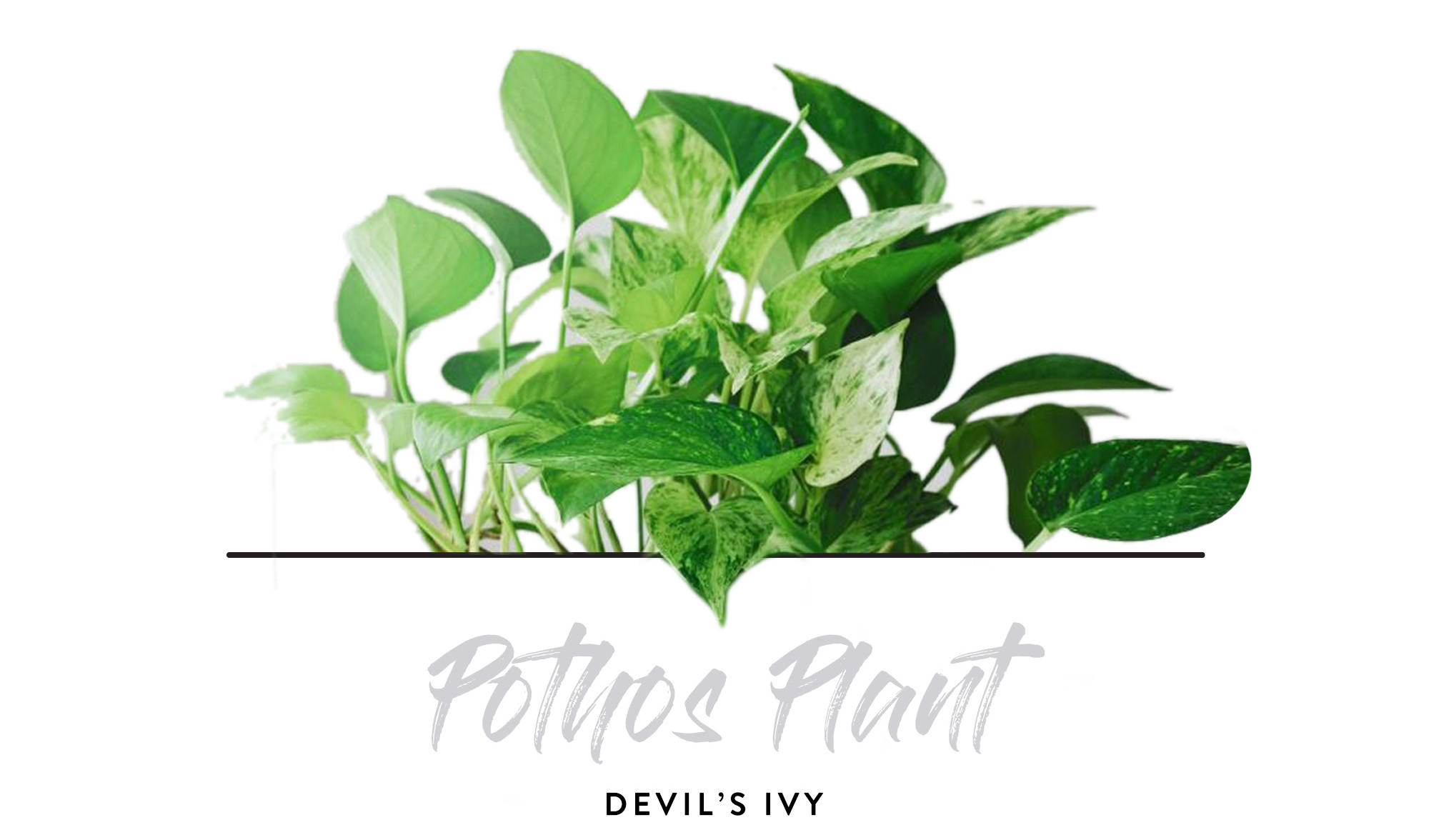
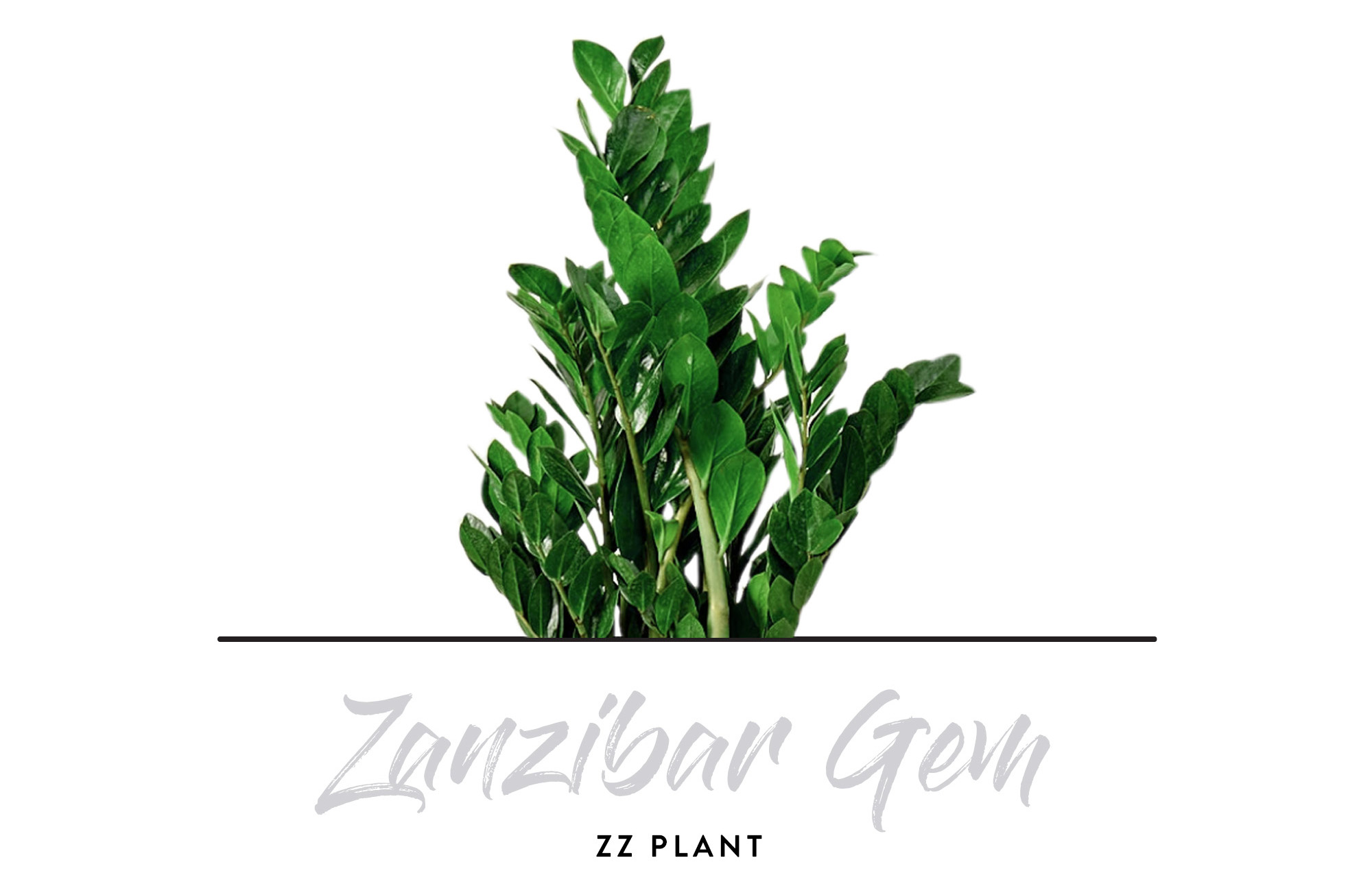
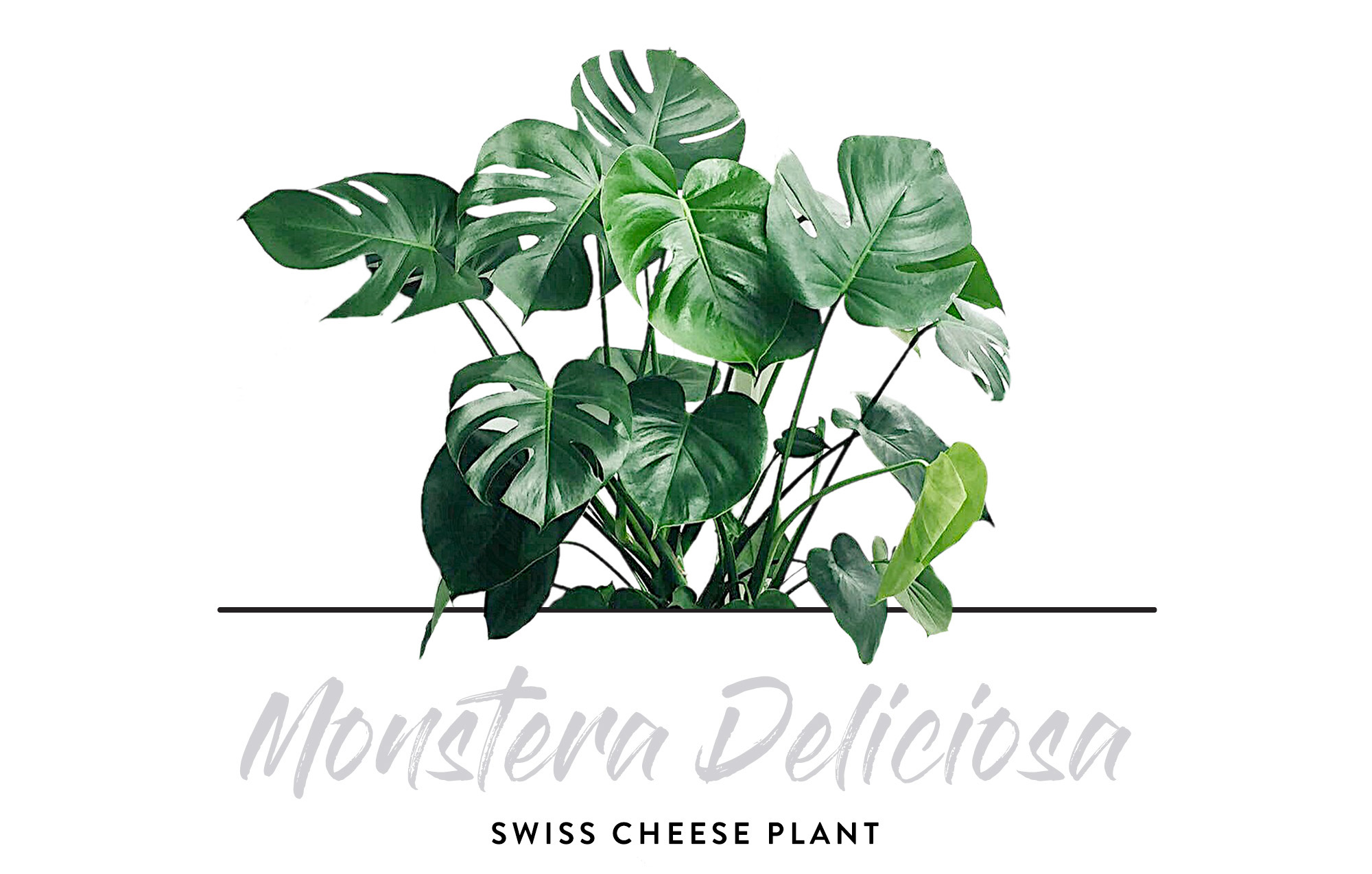
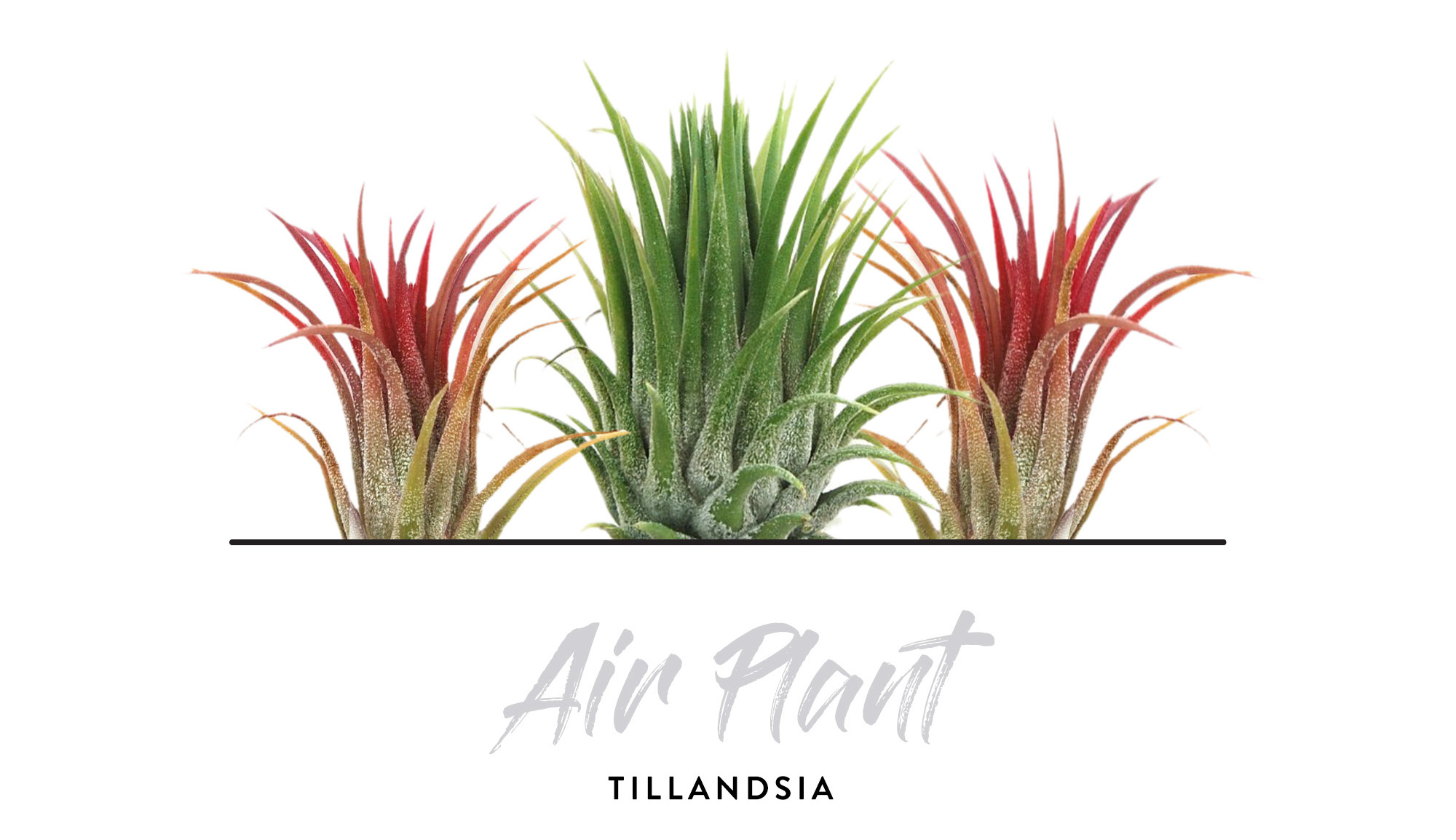
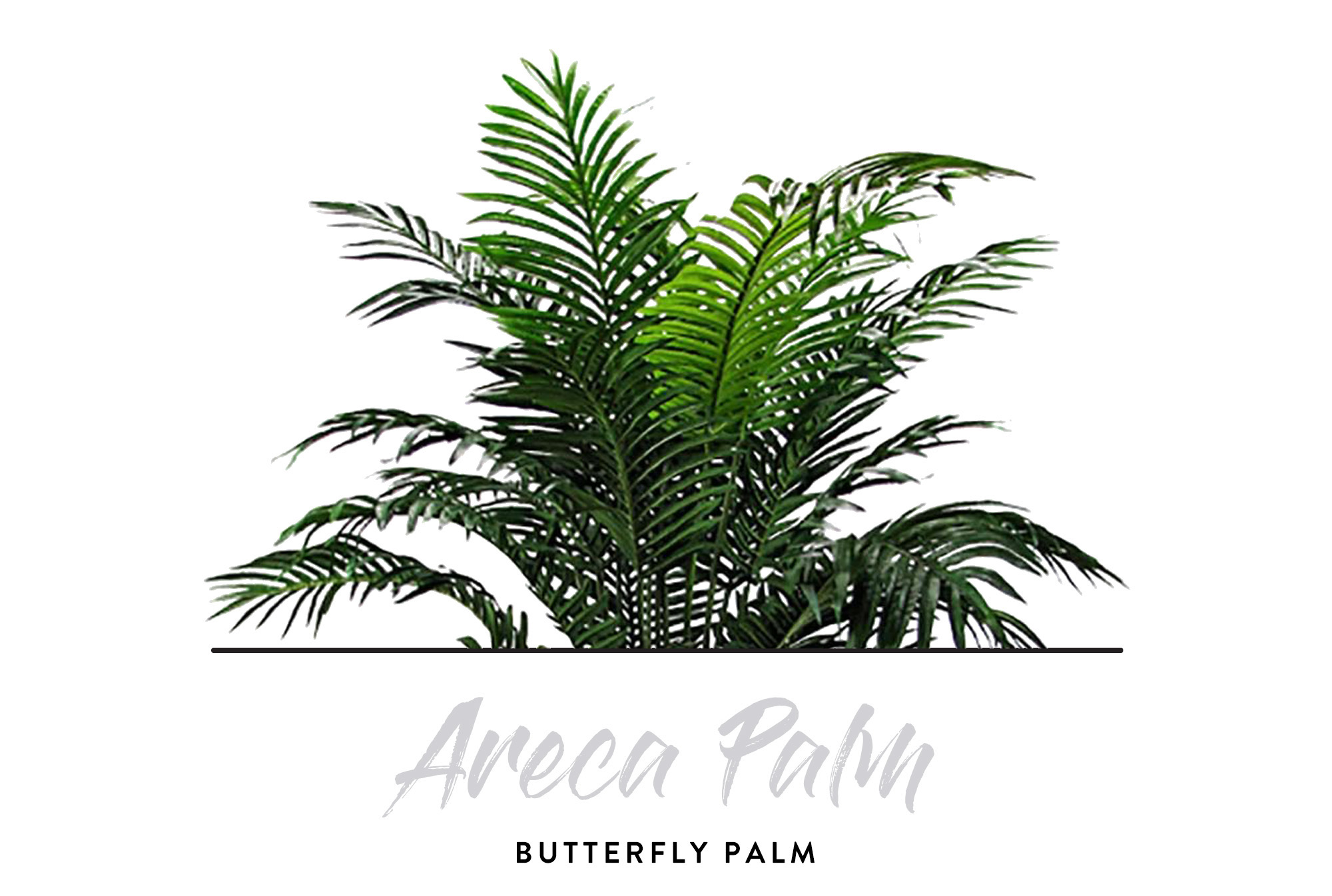



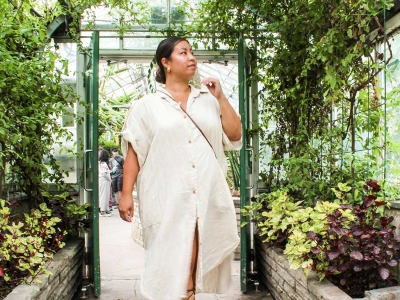
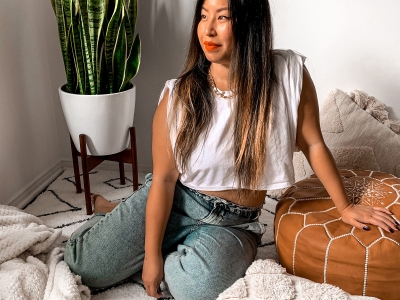


0 Comments